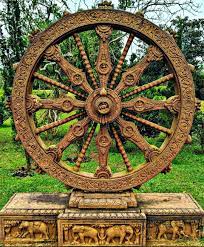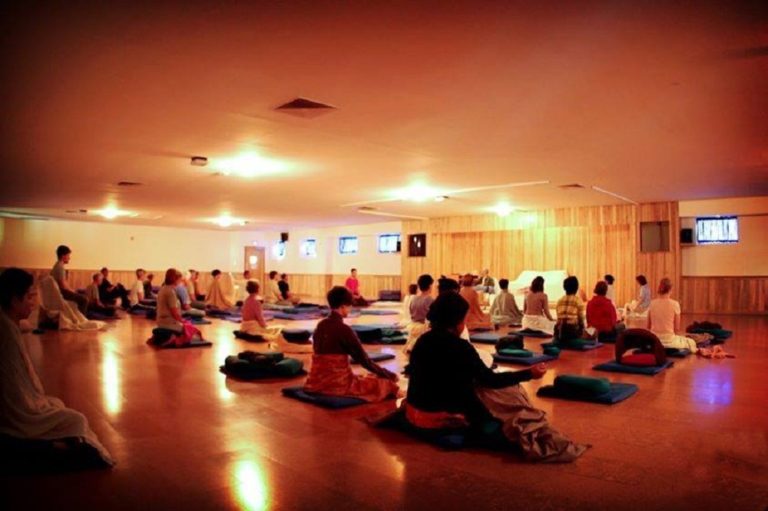By Zile Singh
Vipassana Meditation
I attended my fourth 10-day Vipassana Meditation Course from October 8-19, 2025, at Dhamma Surabhi Centre near Merritt, B.C. There are more than 200 such centers teaching Vipassana worldwide.
Vipassana is one of India’s most ancient meditation techniques developed by The Buddha. Unfortunately, after 500 years of his Maha Parinirvana (death),it was lost from the Indian scene. Somehow, it was kept alive from generation to generation by some Buddhist monks in Burma . Vipassana means seeing things as they really are. It is a practice to know the reality experientially. It is a process of self-purification by self-observation. It is neithera reading nor a listening to any religious scripture. It is not a theory, but a practical one performed in the laboratory of one’s own body and mind. Vipassana is not a rite or ritual based on blind faith. It is neither an intellectual nor a philosophical entertainment. It is a scientific way to “know thyself”. It allows one to face life’s problems in a calm and balanced way. It is an art of living to make a harmonious society. Its purpose is never simply to cure physical disease. However, as a by-product of mental purification, many psychosomatic diseases can be controlled. Vipassana eliminates the three causes of all unhappiness: craving, aversion andignorance. It unties thegordian knots tied by the old habit of reacting in an unbalanced way to pleasant and unpleasant situations in daily life.

The three pillars of Vipassana are: Sheel (morality), Samadhi (concentration) and Pragya (wisdom).To start with, a total silence called the Noble Silence has to be observed during the course. Not only verbal but sign language also is prohibited. No eye and physical contacts with other co-meditators are allowed. The female and male meditators are kept in separate residential quarters. Both sexes sit separately in the meditation and the dining halls. One can put question to the teacher relating to Vipassana only. Students are asked to deposit their cell phones, reading and writing material etc. with the administration during the course. Only two vegetarian meals a day- breakfast at 7 am and lunch at 11.30 are served. For dinner only a bowl of lukewarm ginger water awaits. . Wow, what an interesting life like that of a monk/sanyasi! On top of that, one has to undertake vows not to kill, not to steal, not to commit sexual misconduct, not to tell lies and not to use intoxicants during the course. This is called Sheel.
The above-mentioned background facilitates the mind to quiet down sufficiently. The next step is to develop mastery over the wild mind by training it to remain fixed on a single object– the breath. It is not to regulate breathing. Instead, one observes natural respiration as it is, as it comes in, as it goes out. Watching the breath is called Anapana.Anapana makes the mind sharp and penetrating. It is called Samadhi. Thus, the mind enveloped in Sheel and Samadhi proceeds further to witness the universal truths of impermanence, suffering and ego-lessness in the body. The meditators are asked to sweep/scan through the body fully concentrated part by part and inch by inch from head to toe and vice versa continuously for hours. In this process one can witness the subtle and gross sensations arising and disappearingintoone’s body every second. One becomes a witness to the fact that the subtle and gross sensations are transitory and temporary. One need not develop a craving for pleasant sensations and an aversion for gross sensations. To stay Equanimous is the key. Sensations are Anicca (impermanent). This self-observation is called Pragya. Pragya eradicates the accumulated defilements in the conscious and subconscious mind. At the end of the course, attention is focused for some time on thoughts and feelings of goodwill for all beings. It is calledMetta Bhavana.(May All Beings Be Happy).

The process of self-purification by introspection is not an easy task. Students have to work hard.The late Padmashri Acharya S.N. Goenka, who learnt this technique in the tradition of Sayagyi U Ba Khin, brought it to India in 1969 from Myanmar (Burma). Through his recordedinstructionshe repeatedly guides, “Work patiently, work diligently, work with equanimity. You will succeed.”
Vipassana is not sectarian. People of all faiths across the world participate. Dana (voluntary donation) is the sole source of funding the courses and the centers. The teachers and servers work without remuneration.
————————Zile Singh (zsnirwal@yahoo.ca) is a well-respected columnist, a Vipassana meditator and an author. His two books- ”Truths of Life – Life Enlightened” and “Poetry in Daily Life – Life Enlightened” are available on amazon.ca
















